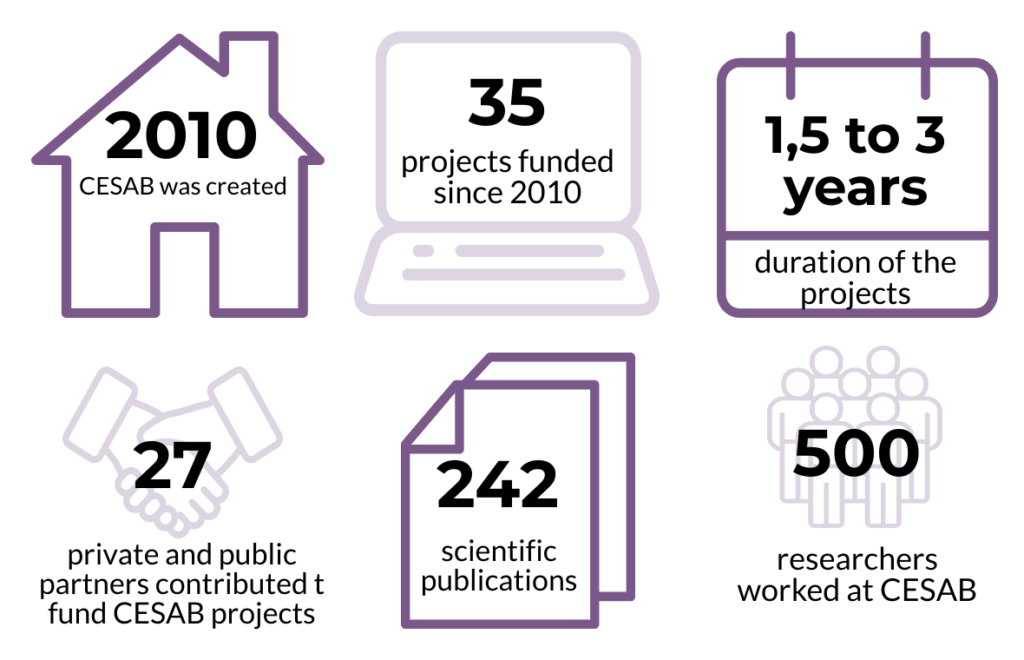[FRB-CESAB] Newsletter 5 CESAB – July 2021
The FRB’s Center for Biodiversity Synthesis and Analysis (CESAB) is a research structure with an international scope whose objective is to implement innovative work on the synthesis and analysis of existing data sets in the field of biodiversity. Twice a year, the CESAB publishes a newsletter listing the different news and activities going on.
A WORD FROM THE SCIENTIFIC DIRECTOR
We are living crazy times! The world is struggling with a major pandemic for more than a year, with dramatic consequences in terms of human lives lost and economic costs. But paradoxically, this crisis reduced (temporally) our impact on the planet, and thus might have also some positive consequences on biodiversity. Now that our economies are starting over, the question is now much we will have learned from the Covid crisis and its side-effects on the environmental crisis, so we do not go back to the business-as-usual GIEC scenario and end up losing on both sides.
The scientific community took the opportunity of the Covid crisis to experiment how science could be made through virtual interactions. Synthesis centers have been at the forefront of this “experimentation” as our core activity is to gather scientists from all over the world. We had to rapidly adapt to supporting fully virtual working groups and after a year we can conclude that virtual meetings, while providing a bridge during the pandemic, cannot replace intense, in-person immersion meetings (Srivastava et al., 2021). Science and particularly synthesis science is also about social interactions between people : these direct interactions fuel collective and creative thinking needed for groups to work on what is planned, and more importantly imagine the unplanned. But, as scientists and more importantly environmental scientists, we must be at the forefront of the paradigm shifts our societies need to go through, to mitigate the environmental crisis. We are thus thinking of re-organizing biodiversity synthesis centers in regional hubs where research teams within each geographic region could meet simultaneously as in-person working groups. These “regional hubs” would also coordinate virtually with each other among synthesis centers. This will not preclude the need to gather whole groups within the lifetime of a project but might significantly reduce the amount of travels and thus the carbon impact of the synthesis working groups. This reorganization of our scientific models will take some time but the price is worth to pay!
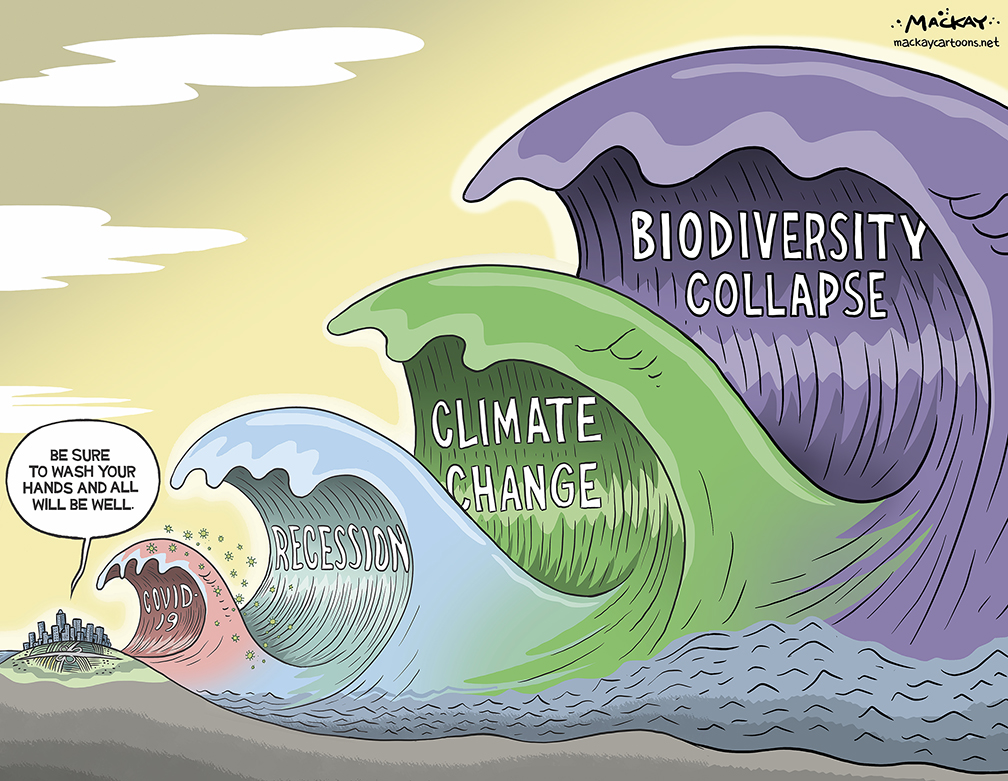
© Graeme Mackay
The Covid crisis cannot make us forget about the ongoing environmental crisis, it should rather exemplify how humanity can work together to solve a global crisis; it should also exemplify how much costly it is to solve a crisis when the crisis is at its climax. The environmental and biodiversity crisis, are not at their climax, they are only beginning. Let’s hope that we will pay the price needed to stop these crisis before we cannot afford to pay it anymore …
These last six months have been particularly busy for the CESAB team and groups. This newsletter reflect this rich activity and the best is yet to come with many new groups starting this year and next. I would like here to thanks thoroughly the CESAB and FRB staff as well as the CESAB scientific committee for the incredible work they already have achieved this year; and thanks the whole FRB and its founders to make all this possible. With the 4 projects funded in the 2020 call and the upcoming 2 projects funded via our France-Brazil joint call, the CESAB will host 20 active groups by 2022. This strong and positive dynamics reflect our collective willingness to fulfill the need for synthesis in biodiversity science as well as the incredible quality and maturity of the scientific community on this fundamental issue. Synthesis will help us tackle the biodiversity crisis before it reaches its climax and I am proud that, at its small scale, the CESAB is helping toward this aim.
Nicolas Mouquet
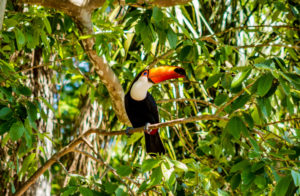
In partnership with the Brazilian Synthesis Center on Biodiversity and Ecosystem Services (SinBiose), the São Paulo Research Foundation (FAPESP) and the French Laboratory of Excellence CEBA (CEnter for the study of Biodiversity in Amazonia), the Center for Biodiversity Synthesis and Analysis (FRB-CESAB) is funding two innovative research projects on biodiversity in the neotropical realm. The submitted projects can be in the fields of natural sciences and/or social and human sciences and should aim at developing the synthesis of ideas and concepts and/or the analysis of existing data. Only projects restricted to terrestrial biomes (i.e., excluding marine biology) and to tropical South America, Central America and/or Caribbean Islands will be considered. The selected pre-proposals will be able to submit a full proposal.
Pre-Proposal deadline: 30th July 2021, 12:00 CEST

The CESAB and the GDR EcoStat organize the third edition of the training course “Data Toolbox for Reproducible Research in Computational Ecology“. Its objective is to train young researchers in reproducibility, software development and version management tools (e.g. R, git, rmarkdown, tidyverse, docker), applied to biodiversity research.
The training course, in French during 5 days, will take place from the 29th of November to the 3rd of December 2021 in the CESAB premises in Montpellier. Registration fees are 300 € including lunch. Scholarships may be awarded depending on eligibility and the course is credited by several doctoral schools (see list on the event page).
Pre-registration deadline: 31st July 2021, midnight CEST
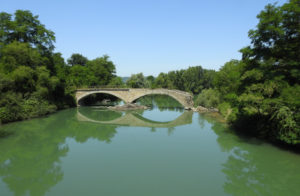
Disentangling landscape and local factors in shaping the taxonomic and functional plant community diversity of roadside corridors, river corridors and cultivated field margins across a European gradient – with the working group BRIDGE
Location: FRB – CESAB, 5, rue de l’École de Médecine, 34000 MONTPELLIER, FRANCE
Contract: 18 months, full time
Closing date: 30 September 2021
Starting date: October 2021
Despite the health situation, which has limited in-person meetings at CESAB in Montpellier, the groups remain active and work remotely: projects’ work goes on, and several scientific articles have recently been published. To help CESAB working groups, the CESAB team put together a guide for virtual working group meetings listing the main tools at your disposal and the CESAB’s recommendations for organizing your virtual meetings and making them as successful as possible
Face to face meetings will start again this autumn 11 group meetings between September and December 2021 at CESAB. The CESAB is expanding! From September, we will be able to host more researchers and will also welcome two CESAB – Afters during which the working groups AFROBIODRIVERS and RAATD will be able to extend their work.

Given the scientific excellence of the projects submitted, and thanks to ITTECOP extra funding, two projects (instead of one) will be funded under this call:
> NAVIDIV
Inland navigation infrastructures and biodiversity: impacts and opportunities for waterwayscape management
PIs: Alienor JELIAZKOV – INRAE (France) and Jean-Nicolas BEISEL – ENGEES/CNRS (France)
> BRIDGE
Building a bridge between river corridors, roadsides and field margins: how landscape interactions modulate taxonomic and functional plant diversity
PIs: Eric TABACCHI – CNRS-INEE (France) and Guillaume FRIED – ANSES (France)
The two projects selected in March have started in the spring and will be funded over 3 years with a 18 month post-doc each. The groups will meet at CESAB for the first time this fall.

The FRB, through the CESAB, launched a call for research projects, to fund at innovative projects relating to the synthesis of ideas and concepts and/or the analysis of existing data. Among the 53 pre-proposals received, 11 were invited to submit a full proposal, and 4 projects were selected by the evaluation committee of the call, composed of members from the CESAB scientific committee and international experts:
Global redistribution of biodiversity: A macro- and eco-evolutionary approach to understand species vulnerability to global changes
PIs: Gaël GRENOUILLET – Université de Toulouse (France) and Lise COMTE – Illinois State University (USA)
Supporting climate resilience through equitable ocean conservation
PIs: Joachim CLAUDET – CNRS (France), David GILL – Duke University (USA) and Jessica BLYTHE – Brock University (Canada)
Synthesis of Neotropical Tree Biodiversity with Plot Inventories
PIs: Jérôme CHAVE – CNRS (France) and Adriane ESQUIVEL MUELBERT – Université de Birmingham (United Kingdom)
Understanding power dynamics in stakeholder participation: integrating theory and practice for effective biodiversity conservation
PIs: Juliette YOUNG (INRAe) et James BUTLER (CSIRO)
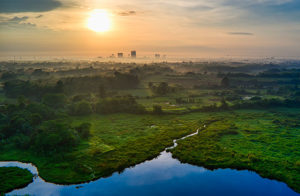
The Canadian synthesis center CIEE-ICEE organized, with the help of the FRB-CESAB, the French Embassy in Vancouver and the University of British Columbia, an online conference on Wednesday, April 7, 2021. The panelists’conference included Bastien Mérigot (Montpellier University), principal investigator of the FRB-CESAB/ CIEE project FISHGLOB, and Isabelle Gounand (Sorbonne Université), principal investigator of the FRB-CESAB/ CIEE project RED-BIO.
Related to this conference, Bastien Merigot gave an interview in the national Canadian radio on the effect of climate change on marine biodiversity.

Joseph Langridge joined the FRB-CESAB team in March 2021 as a scientific officer for “systematic reviews and syntheses”, to develop the practice of systematic reviews for research and decision support, and to support the work of the systematic review projects.
Selected in 2020, AGRI-TE and INDYSE both officially started in June 2021 with the recruitment of Jonathan Bonfanti as a postdoral researcher for AGRI-TE, also funded by Agropolis Foundation, and Sylvie Campagne for INDYSEM. Both projects will meet at CESAB for the first time mid-July, for a one-week methodological workshop.
- Congratulations to CESAB postdocs!
Congratulations to Bérenger Bourgois, postdoctoral researcher for DISCO-WEED who just got recruited as a permanent researcher for INRAe, and to Nicolas Loiseau, postdoctoral researcher for FREE who got recruited by CNRS.
A survey conducted among CESAB project leaders in 2020 had shown that 85% of CESAB post-doctoral fellows are still in academia, and that more than half of them got a permanent position within 3 years of their post-doctorate at the FRB.
-
- Publications from CESAB working groups
Fried G, Armengot L, Storkey J, Bourgeois B, Gaba S, Violle C & Munoz F (2021) Do ecological specialization and functional traits explain the abundance-frequency relationship? Arable weeds as a case study. Journal of Biogeography, 48, 37–50. doi: 10.1111/jbi.13980.
Fried G, Armengot L, Storkey J, Bourgeois B, Gaba S, Violle C & Munoz F (2021) Do ecological specialization and functional traits explain the abundance-frequency relationship? Arable weeds as a case study. Journal of Biogeography, 48, 37–50. doi: 10.1111/jbi.13980.
Maureaud A, Frelat R, Pécuchet L, Shackell N, Mérigot B, Pinsky ML, Amador K, Anderson SC, Arkhipkin A, Auber A, Barri I, Bell RJ, Belmaker J, Beukhof E, Camara ML, Guevara-Carrasco R, Choi J, Christensen HT, Conner J, Cubillos LA, Diadhiou HD, Edelist D, Emblemsvag M, Ernst B, Fairweather TP, Fock HO, Friedland KD, Garcia CB, Gascuel D, Gislason H, Goren M, Guitton J, Jouffre D, Hattab T, Hidalgo M, Kathena JN, Knuckey I, Kidé SO, Koen-Alonso M, Koopman M, Kulik V, León JP, Levitt-Barmats Y, Lindegren M, Llope M, Massiot-Granier F, Masski H, McLean M, Meissa B, Mérillet L, Mihneva V, Nunoo FKE, O’Driscoll R, O’Leary CA, Petrova E, Ramos JE, Refes W, Román-Marcote E, Siegstad H, Sobrino I, Sólmundsson J, Sonin O, Spies I, Steingrund P, Stephenson F, Stern N, Tserkova F, Tserpes G, Tzanatos E, van Rijn I, van Zwieten PAM, Vasilakopoulos P, Yepsen DV, Ziegler P & Thorson J (2021) Are we ready to track climate-driven shifts in marine species across international boundaries? – A global survey of scientific bottom trawl data. Global Change Biology, 27, 220–236. doi: 10.1111/gcb.15404.
Gross N, Le Bagousse-Pinguet Y, Liancourt P, Saiz H, Violle C & Munoz F (2021) Unveiling ecological assembly rules from commonalities in trait distributions. Ecology Letters, accepted. doi: 10.1111/ele.13789.
Mouillot D, Loiseau N, Grenié M, Algar AC, Allegra M, Cadotte MW, Casajus N, Denelle P, Guéguen M, Maire A, Maitner B, McGill BJ, McLean M, Mouquet N, Munoz F, Thuiller W, Villéger S, Violle C & Auber A (2021) The dimensionality and structure of species trait spaces. Ecology Letters, accepted. doi: 10.1111/ele.13778.
Murgier J, McLean M, Maire A, Mouillot D, Loiseau N, Munoz F, Violle C & Auber A (2021) Rebound in functional distinctiveness following warming and reduced fishing in the North Sea. Proceedings of the Royal Society B: Biological Sciences, 288, 20201600. doi: 10.1098/rspb.2020.1600.
Sala E, Mayorga J, Bradley D, Cabral RB, Atwood TB, Auber A, Cheung W, Costello C, Ferretti F, Friedlander AM, Gaines SD, Garilao C, Goodell W, Halpern BS, Hinson A, Kaschner K, Kesner-Reyes K, Leprieur F, McGowan J, Morgan LE, Mouillot D, Palacios-Abrantes J, Possingham HP, Rechberger KD, Worm B & Lubchenco J (2021) Protecting the global ocean for biodiversity, food and climate. Nature, 592, 397–402. doi: 10.1038/s41586-021-03371-z.
Synthesis paper: Protéger l’océan pour la préservation de la biodiversité, l’approvisionnement en nourriture et l’atténuation du changement climatique (in French)
Guzman LM, Trzcinski MK, Barberis IM, Céréghino R, Srivastava DS, Gilbert B, Pillar VD, de Omena PM, MacDonald AAM, Corbara B, Leroy C, Ospina Bautista F, Romero GQ, Kratina K, Debastiani VJ, Gonçalves AZ, Farjalla VF, Richardson BA, Richardson MJ, Dézerald O, Petermann J, Talaga S, Piccoli GCO, Jocqué M & Montero G (2021) Climate influences the response of community functional traits to local conditions in bromeliad invertebrate communities. Ecography, 44, 440–452. doi: 10.1111/ecog.05437.
Doubek JP, Anneville O, Dur G, Lewandowska AM, Patil VP, Rusak JA, Salmaso N, Seltmann CT, Straile D, Urrutia-Cordero P, Venail P, Adrian R, Alfonso MB, DeGasperi CL, de Eyto E, Feuchtmayr H, Gaiser EE, Girdner SF, Graham JL, Grossart H-P, Hejzlar J, Jacquet S, Kirillin G, Llames ME, Matsuzaki SS, Nodine ER, Piccolo MC, Pierson DC, Rimmer A, Rudstam LG, Sadro S, Swain HM, Thackeray SJ, Thiery W, Verburg P, Zohary T & Stockwell JD (2021) The extent and variability of storm-induced temperature changes in lakes measured with long-term and high-frequency data. Limnology and Oceanography, 66, 1979–1992. doi: 10.1002/lno.11739.
Couvreur TLP, Dauby G, Blach-Overgaard A, Deblauwe V, Dessein S, Droissart V, Hardy OJ, Harris DJ, Janssens SB, Ley AC, Mackinder BA, Sonké B, Sosef MSM, Stévart T, Svenning J-C, Wieringa JJ & Faye A (2021) Tectonics, climate and the diversification of the tropical African terrestrial flora and fauna. Biological Reviews, 96, 16–51. doi: 10.1111/brv.12644.
Carlot J, Kayal M, Lenihan HS, Brandl SJ, Casey JM, Adjeroud M, Cardini U, Merciere A, Espiau B, Barneche DR, Rovere A, Hédouin L & Parravicini V (2021) Juvenile corals underpin coral reef carbonate production after disturbance. Global Change Biology, 27, 2623–2632. doi: 10.1111/gcb.15610.
Urbina-barreto I, Garnier R, Elise S, Pinel R, Dumas P, Mahamadaly V, Facon M, Bureau S, Peignon C, Quod J-P, Dutrieux E, Penin L & Adjeroud M (2021) Which method for which purpose ? A comparison of line intercept transect and underwater photogrammetry methods for coral reef surveys. Frontier in Marine Science, 8, 636902. doi: 10.3389/fmars.2021.636902.
Cheikh Albassatneh M, Escudero M, Monnet A-C, Arroyo J, Baccheta G, Bagnoli F, Dimopoulos P, Hampe A, Leriche A, Médail F, Nikolic T, Ponger L, Vendramin GG & Fady B (2021) Spatial patterns of genus-level phylogenetic endemism in the tree flora of Mediterranean Europe. Diversity and Distributions, 27, 913–928. doi: 10.1111/ddi.13241.
Monnet A-C, Cilleros K, Médail F, Cheikh Albassatneh M, Arroyo J, Bacchetta G, Bagnoli F, Barina Z, Cartereau M, Casajus N, Dimopoulos P, Domina G, Doxa A, Escudero M, Fady B, Hampe A, Matevski V, Misfud S, Nikolic T, Pavon D, Roig A, Barea ES, Spanu I, Strid A, Vendramin GG & Leriche A (2021) WOODIV, a database of occurrences, functional traits, and phylogenetic data for all Euro-Mediterranean trees. Scientific Data, 8, 89. doi: 10.1038/s41597-021-00873-3.
-
- Publications from the FRB-CESAB team
Langlois J, Guilhaumon F, Bockel T, Boissery P, de Almeida Braga C, Deter J, Holon F, Marre G, Tribot A-S & Mouquet N (2021) An integrated approach to estimate aesthetic and ecological values of coralligenous reefs. Ecological Indicators, 129, 107935. doi: 10.1016/j.ecolind.2021.107935.
Wilson JK, Casajus N, Hutchinson RA, McFarland KP, Kerr JT, Berteaux D, Larrivée M & Prudic KL (2021) Climate change and local host availability drive the northern range boundary in the rapid expansion of a specialist insect herbivore, Papilio cresphontes. Frontiers in Ecology and Evolution, 9, 579230. doi: 10.3389/fevo.2021.579230.
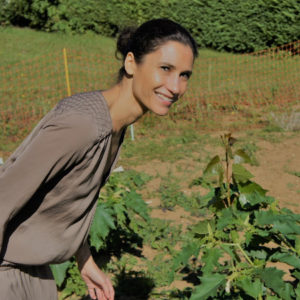
Sabrina Gaba, PI for the project DISCO-WEED from 2016 to 2019
My research as a researcher at INRAE aims at promoting transformation of agricultural production systems in order to increase agricultural landscape resilience to global changes. Humankind has always depended on the services provided by ecosystems, whether for food production, fresh water and fibre, for non-material benefits such as places of recreation and inspiration, and for benefits obtained through the regulation of ecosystem processes, such as climate regulation. The post-war agricultural model is based on maximizing a sole ecosystem service, agricultural production. This management has made agricultural socio-ecosystems vulnerable to disturbances and uncertainties of an abiotic (climatic events), biotic (epidemics) or economic (price volatility) nature. This is why my research explores how humans can interact with their environment in a more sustainable way through knowledge production, and through actions that involved the stakeholders of the agricultural farmland.
The FRB-CESAB DISCO-WEED project was an opportunity to bring together an interdisciplinary consortium to produce essential knowledge for rethinking weed management. Why “rethink” weed management? Weeds are the spontaneous flora in arable lands. Among the most emblematic are poppies, cornflowers, thistles and wild oats. These plants provide resources to many organisms in farmland: seeds for insects and birds, pollen and nectar for pollinators, plant biomass for herbivores and even resources for soil microorganisms. They thus contribute to the maintenance of biodiversity in agricultural landscapes,…. but they can also lead to yield losses. Indeed, they use the same resources (water, nitrogen, light) as the crop plants and compete for these resources. This is why these plants have a bad reputation and as generally viewed as pests; and why they are intensively managed to reduce the intensity of competition for resources. These management methods rely heavily on the use of herbicide treatments, which the effects on human health, biodiversity and the environment are a major concern for society.
In the DISCO-WEED project, our consortium sought to understand: how to reduce the use of herbicides or the intensity of mechanical weeding, and thus reduce the pressure on the environment while preserving agricultural yields and weed diversity? CESAB was a great opportunity to bridge the knowledge and skills of ecologists, agronomists, statisticians, field and theoretical researchers, to gather exceptional data sets and with the work of Bérenger Bourgeois, the excellent post-doctoral fellow of the project, we were able to produce results on the role of weeds in agroecosystem functioning, the underlying processes of weed diversity at several time and spatial scales, and management pathways to reconcile production, economic performance and biodiversity!
- DISCO-WEED is still active: five publications were published after the project was finished and the latest were the subject of a press release (in French: “Les plantes adventices au service de l’agriculture : pourquoi sont-elles essentielles et comment les protéger ?“). You can also listen to Sabrina Gaba talks about weeds in the French radio France Inter in “La Terre au Carré“.
